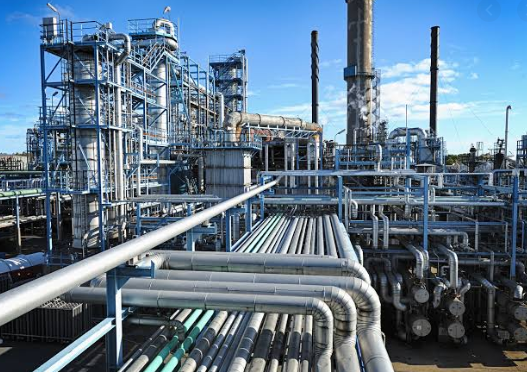
Federal Government has spent over N780 billion as ‘under-recovery’ between January and December 2019, surpassing the N305 billion provision for under-recovery in the 2019 budget, according to investigation by Saturday Tribune.
It is noteworthy to state that the Nigerian National Petroleum Corporation (NNPC) had stated that only the National Assembly can make provision for fuel subsidy, hence, it settled for the term ‘under-recovery’ as a perfect substitute for the word ‘fuel subsidy’ in its Monthly Financial Reports.
Just as the federal government made a N450billion provision for fuel subsidy in the 2020 budget, it made a provision of N305billion for fuel subsidy in the 2019 budget, but investigations have shown that such provisions are grossly inadequate, hence the need for the NNPC to pay itself the cost of fuel subsidy on premium motor spirit (PMS) otherwise called petrol from the crude oil proceeds before remitting the balance to the federation account.
According to the Monthly Financial Report by the NNPC, the sum of N104.4billion was spent as under-recovery or fuel subsidy on petrol. In February 2019, it was N102.3billion while it spent N30.6billion in March 2019.
A total sum of N89.2billion, N42.9billion and N31.4billion were spent as fuel subsidy in April, May and June 2019 respectively. By the end of first half (H1) 2019, a sum of N400.8billion was spent on fuel subsidy, exceeding the N305billion annual budget for fuel subsidy.
In July 2019, the corporation recorded N93.7billion as fuel subsidy, N89.7billion in August 2019 and N31.41billion in September 2019 respectively.
According to the PMS pricing templates on the website of the Petroleum Products Pricing Regulatory Agency (PPPRA), an average of N51.15billion was recorded as fuel subsidy in October 2019; N60.37billion was recorded as fuel subsidy in November 2019 and N61.004billion would have been recorded by 31 December 2019 at an average fuel subsidy of N35.78 per liter and daily consumption of 55million liters per day.
As part of its strategy to block leakages along the importation of refined petroleum products value chain in the downstream sector, the NNPC introduced the Direct-Sales-Direct-Purchase (DSDP) mechanisms whereby crude oil is allocated to traders who in turn exchange the allocated crude oil for refined products like petrol and kerosene.
The price of petrol is regulated and the federal government has fixed the pump price of petrol at between N135-145 per liter but shoulders the price differentials that usually exist between Expected Open Market Price (EOMP) and the recommended pump price.
The EOMP consists the cost + freight, lightening expenses, NPA (charge), NIMASA charge, Jetty Thru’Put Charge, Storage Charge, Financing and Distribution margin.
The NNPC on behalf of the federal government bears all the charges.
Crude oil price ended the year 2018 at $57.36 per barrel while it averaged $59.41 per barrel in January 2019. This steadily moved to an average of $66.70 per barrel in November 2019. As at 24th December 2019, it hits $69.26 per barrel.
By implication, for a country like Nigeria that relies majorly on crude oil earnings to finance its budget aside loans, increasing crude oil price means rising revenue for the country.
But unfortunately for Nigeria, it is a zero sum game and a huge burden because Nigeria is the second OPEC member country without a functioning refinery and relies heavily on the importation of refined petroleum products for its teeming population despite being the largest producer in Africa and sixth largest in the world.
It is zero sum game because it exports raw and unprocessed product (crude oil) and imports refined petroleum products (premium motor spirit or petrol, automated gas oil or diesel, Jet-A1 fuel or aviation fuel, Household Kerosene or kerosene etc).
It would be recalled that Saturday Tribune reported earlier that with an average of N700billion annually as fuel subsidy, Nigeria may have spent not less than N8.4trillion in 10 years. However, according to an analysis by BudgIT, Nigeria has spent N10trillion between 2006 and 2018 (12 years).
Reacting to the development, a former Minister of Interior and the Chairman/CEO of Integrated Oil and Gas Limited, Captain Emmanuel Iheanacho, asked “Who are we subsidizing?”
He said the intention of the subsidy is to cushion the effect of transportation cost of poor people.
“But when you really look at it, the real beneficiaries of the subsidy are the middle class who own cars and buses and not the poor people who ride the buses. It allows the owners to make bumper profits. They are middle class people who can afford to buy fuel at deregulated price.
“If you observe, whenever we have fuel crises across the nation, people are able to pay N300 as transport fares. So why are we subsidizing it when people can afford to pay for it? You can see that all the countries around us are selling fuel at the correct price.
“The government recently shut down the borders, but there would have been no need to shut down the borders if we are selling fuel at the correct price because there would be no incentives for people to smuggle fuel across the border to sell it for a big profit.
“We appreciate the government’s concern for the plight of the people but if we really look at it, there is no need to continue to subsidize for anyone.
The government is denying itself the opportunity for accruing huge revenue that it requires for infrastructure development. Government should have a second look at the policy and strategy and decide to remove it, then all that monies used as subsidy will be used for development,” he said.




